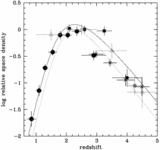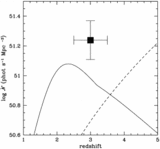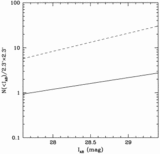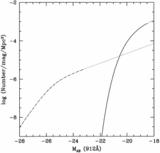Image Details
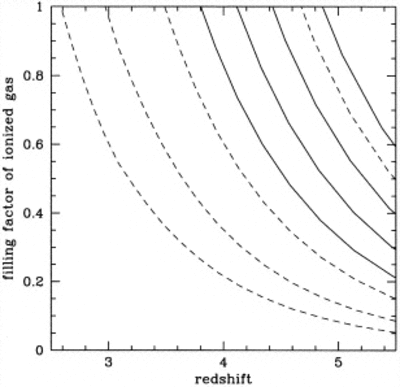
Caption: Fig. 5.
Evolution of the H II (solid lines) and He III (dashed lines) filling factors as a function of redshift for an inhomogeneous universe where photoionization is dominated by QSOs, and clumps with steep density gradients make only a negligible contribution to the total recombination rate. The IGM density is taken to be ﹩\Omega _{b}h^{2}_{50}=0.08﹩, and, from right to left, the four curves assume a time‐independent clumping factor of ﹩C=1﹩, 10, 20, and 30 (﹩C=1﹩ in the case of a uniform IGM). The QSO intrinsic spectrum varies as ﹩\nu ^{-1.8}﹩ shortward of the hydrogen Lyman edge. Note how the ionization of H I (He II) is never completed before ﹩z=4.0﹩ (﹩z=3.0﹩) in models with ﹩C\geq 10﹩.
Copyright and Terms & Conditions
© 1999. The American Astronomical Society. All rights reserved. Printed in U.S.A.


